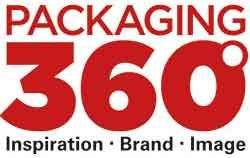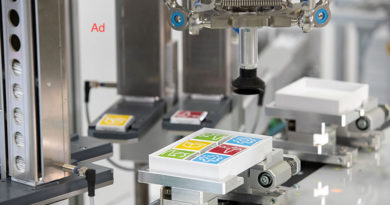About Barbecue Mustard, WC Ducks and Other Everyday Helpers
Brands can position themselves better at the point of sale if they adapt to people’s everyday behavior, says Dr. Uwe Lebok, CEO of K & A BrandResearch in an interview. The brand expert uses the term Context Thinking for this purpose. In the PACKBOX forum at FACHPACK, he will be talking about context packaging and the fast track to the consumer.
You say packaging can be a help in everyday guidance chaos. What do you mean by that?
Dr. Uwe Lebok: Packaging has marker functions for people. Like traffic signs and traffic signals. They help us simplify everyday life: If we recognize a brand in the FMCG segment by its packaging and the brand and product behind the packaging has somehow done us good, then that makes it easier for us to purchase. And the probability of a repeat of the experienced good feeling or everyday relief – for example, cleaning the toilet with a WC duck – is at a maximum. In such cases, packaging acts like a distinctive brand asset.
In addition, packaging can signal to us the occasions and contexts to which a product is particularly well suited. As consumers, we perceive the simplest form of contextualization in packaging at Christmas, Easter, and Halloween on the candy shelf. But there are numerous other contextualizations which motivate new and additional occasions for consumption we hadn’t even thought of before we went shopping.
Brain researcher Georg Hänsel says that our emotions make the buying decision at the POS. Do you agree?
Lebok: According to behavioral scientist Daniel Kahneman, the human brain makes about 95 percent of its decisions intuitively and thus not rationally thoughtthrough. Kahneman calls this System-1, and some refer to it as “emotional” decision-making. If we know something, have had positive experiences, then that makes it easier for us to decide to buy it again, to establish an unspectacular routine.
If, however, additional signals are sent to us from the POS, which currently simply “suit us”, which make it easier for us to make decisions in everyday contexts relevant to us, then this leads to spontaneous reactions – colloquially “from the gut”. For example, we find it easier to decide which products are suitable for certain everyday contexts if the package design allows us to decode the corresponding key stimuli or designations in a way that is appropriate for the situation. In the case of a tube of mustard labeled as “barbecue mustard”, consumers simply find it easier to select such a mustard and prefer it to others when shopping for suitable condiments for a summer barbecue event.
What can brands do or do better to position themselves at POS?
Lebok: Our answer here is almost always the same: Start your thinking with the consumer’s everyday behavior, what we call context thinking. Today, it is much more important for people to think about a brand or product in very specific situations than to know a lot about it in depth. Brands should, therefore, focus more on how they come up with the most concrete or frequent solutions for everyday contexts, and much less on consumers knowing as much as possible about a brand, its purpose and policy. Today’s successful brands deliver easy solutions in everyday contexts. And packaging, through its shape and corresponding packaging communication, can be a decisive lever for decisions!
In the face of inflation, consumers have to pay more and more attention to prices. Will packaging take on a different role in this context?
Lebok: The same applies to times of crisis: Strong brands rely on consistent brand management and branding, especially then. And then also on packaging communication that suggests that my brand can be just the right choice for certain occasions. International studies have repeatedly shown that those brands that invest in brand and (packaging) communication in times of crisis are significantly more successful in their markets after crises have ended.
Of course, in times of recession, price will play a very important role in purchasing decisions: Products that promise luxury – and are more expensive – will again be limited to a few or rarer moments and selected narrow target groups. This will certainly affect numerous branded companies. In these times, retailers’ own brands will gain in importance as lower-priced alternatives – possibly also stimulated by targeted contextual appeal. It is not very realistic to expect packaging to degenerate into a mere “price tag” for brands.
FORUM PACKBOX
Lebok would like to show how context thinking starting from the everyday life of consumers in marketing and packaging communication helps to find efficient solutions at the POS and contributes to an easy purchase decision with numerous examples at the Forum of the PACKBOX at FACHPACK on September 27.
Marco Gromer, Senior Brand Consultant at K&A BrandResearch AG, and Claudia Rivinius, Marketing Director at STI Group, will also be giving impulse presentations on successful concepts for brands and packaging at the POS. Summarized learnings and findings from the keynote speeches will be discussed with the speakers. In addition, possible approaches for context packaging will be outlined, which promise start–ups, medium-sized companies but also globally operating companies the greatest possible market success – with a reference to the special role of the packaging industry, Lebok explains.
by Anna Ntemiris




